Red destination: Choosing an ExoMars landing site
- Published
- comments
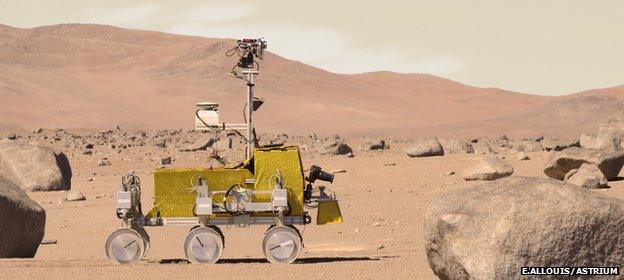
The search for a suitable site to land Europe's ExoMars rover, external in 2019 is about to begin.
A request will go out in the next few weeks to the scientific community, asking for expressions of interest to join a working group on the subject.
Once this panel is in place, planetary researchers will then be invited to a meeting, likely to be in the spring of next year.
This will formally kick-off the site selection process, which should take a couple of years to complete.
The European Space Agency's ExoMars rover - a roughly 350kg vehicle - is currently in the late stages of its design.
Its mission will be to scour the surface of the Red Planet for signs of past or present life.
It will have a drill to pull samples up from 2m down, and instruments to assess any organic chemistry that might be present.
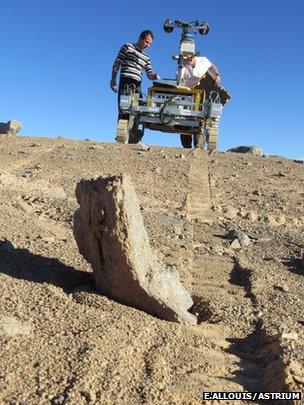
The "Bridget" ExoMars prototype is currently involved in trials in the Atacama Desert
But choosing the right place to go on Mars is critical to the whole endeavour.
"I expect before the end of this month to issue the call to the science community, asking them for letters of interest in becoming a member of the site selection working group," Jorge Vago, Esa's ExoMars project scientist, told me.
"We hope this will generate some buzz, and we hope to appoint the working group in November. It will consist of 10-12 external scientists, the project scientists and people from industry.
"I would expect by the middle of next year we should have zeroed in on about four top candidate sites to start studying in detail."
The scientific community will propose and argue the merits of various candidate destinations; new satellite imagery will be commissioned to inform the discussions.
"Best science" will not, however, be the only consideration in making the ultimate decision. There are very important engineering constraints as well.
No landing system yet devised can put down on a sixpence; the best you can hope for is a zone of confidence.
Even for the brilliant "skycrane" used by the American's Curiosity rover, there was an ellipse of uncertainty that measured 20km by 7km at the final estimate.
ExoMars' landing system is being constructed by the Russians and will be reminiscent of the Lunokhod Moon landers of the 1970s, external.
The expected error ellipse will be considerably larger - about 100km by 15km.
This means that wherever the scientists might like to go, the engineers will need to satisfy themselves that the rover can actually get there with minimal risk.
So, for example, Gale Crater, the current location of Curiosity, would appear to be off the list of potential destinations because the Russian system will not have the accuracy to put ExoMars in this deep hole.
The preponderance of slopes and boulder fields will be a consideration. And because ExoMars is a solar-powered rover, it will also be tied relatively close to the equator.
So where will ExoMars go? Favoured Locations that lost out for Curiosity's attention are sure to crop up again.

Mawrth Vallis is one of the oldest terrains on Mars and a favoured destination for many scientists
If I were to nominate an early runner in the race, it would probably be Mawrth Vallis.
This is a favourite among many European planetary scientists, and is the location where Esa's Mars Express Orbiter spied abundant deposits of magnesium-rich and iron-rich clay minerals, external - a clear sign that a lot of water was once in contact with the rocks over an extended period. To find evidence of life, you must follow the water.
Prof Dawn Sumner, who was co-chair of the Curiosity landing site working group, told me: "Mawrth Vallis is a site of exposed ancient martian crust - crust that is likely older than any rocks we've found on Earth.
"The rocks there show spectral signatures of diverse hydrous minerals in data from Mars Express and Nasa's Mars Reconnaissance Orbiter.
"These spectral signatures, within the oldest crust, make this site attractive, because it provides an opportunity to study the formation and alteration of some of the oldest parts of Mars.
"Mawrth Vallis, like most of the ancient martian crust, shows evidence of multiple impacts; it is the high concentration of impact craters that indicates that it is old.
"These areas show evidence of multiple fracturing events due to impacts, and the Mawrth Vallis landing ellipse identified as a Curiosity candidate shows many fracture patterns that may be related to various impact-forming events. The fracture patterns vary in the area and may be part of the landing site selection considerations."
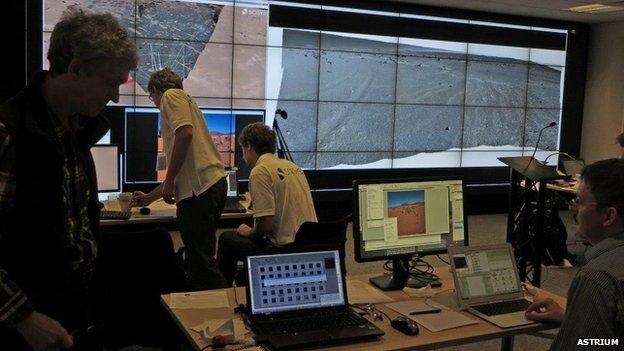
The operations room at Harwell: Learning how to run a Mars surface mission starts here
Wherever ExoMars goes, it will be given an initial mission lasting 218 martian days, or sols.
It will get rolling quickly to make the most of the opportunity, and in this past week some of those who'll be involved have been getting a feel for what surface operations will involve, external.
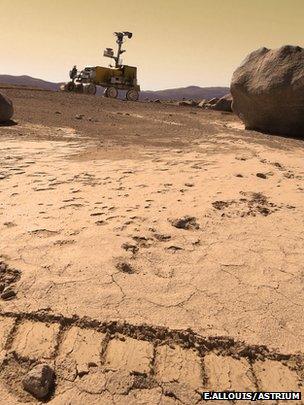
The Chilean desert is remarkably Mars-like
A dummy control room has been set up at the Satellite Applications Catapult in Harwell, Oxfordshire, from where instrument teams have been sending commands to a prototype rover in the Atacama Desert.
The boulder fields of this Chilean landscape look just like Mars, and it is cold and dry to boot.
Twice a day, the Harwell team has been examining pictures acquired by the prototype, known as "Bridget", and then directing it to various targets to investigate.
The commands are sent to the "relay orbiter" (in reality, a support team in the desert), where they are checked and uploaded into the rover. Bridget does its stuff, examining rocks with its "hand lens" and imaging the sub-surface with radar, before returning the data to England to repeat the exploration cycle.
"Operations is a very different discipline from design and testing; and you have to get people into a different mind-set," says Lester Waugh from Astrium, the big European space company that is leading the manufacture of the ExoMars rover.
"You think very much about risk, because if there is any danger that the rover may be damaged, you have to think very seriously before doing something - because you could lose your mission."
- Published21 June 2013
- Published18 June 2013
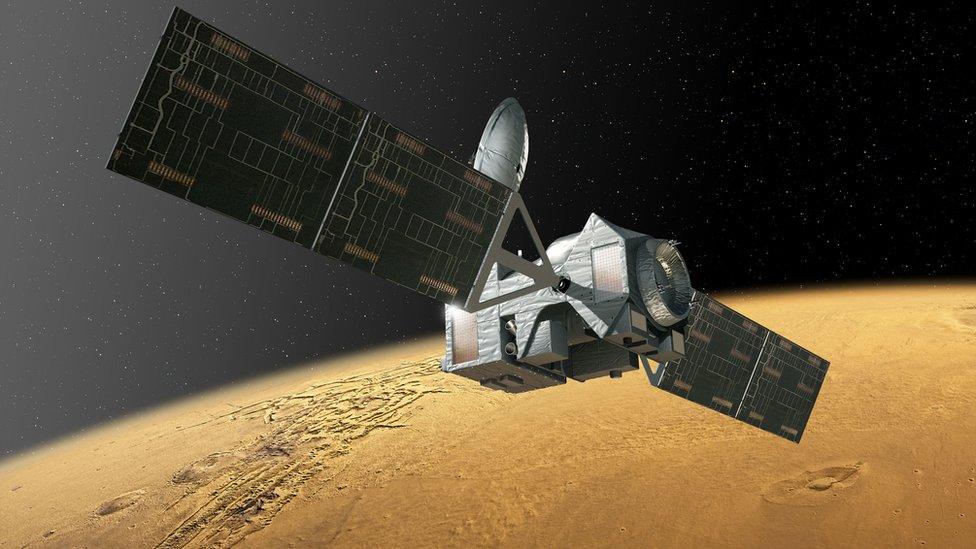
- Published3 June 2013
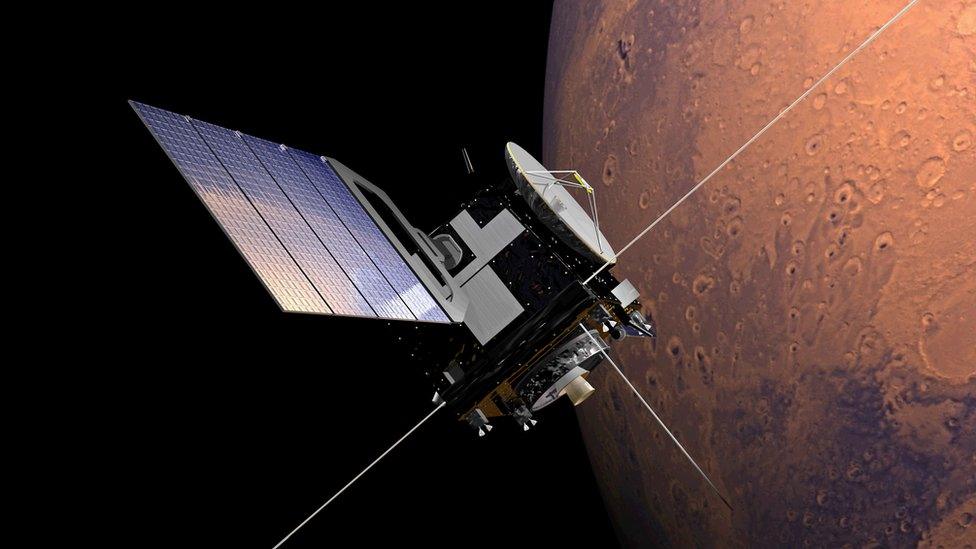
- Published20 November 2012
